Typeerror ‘Int’ Object Is Not Callable
When working with Python, you might come across an error message that says “TypeError: ‘int’ object is not callable.” This error occurs when you try to treat an integer (int) object as a function or a callable object. In this article, we will explore the concept of objects in Python, specifically the ‘int’ object, understand callable objects, common scenarios leading to this error, examples and explanations, ways to fix the error, best practices to avoid it, and finally, conclude with a summary.
Understanding the Concept of Objects in Python
In Python, everything is an object, and objects can have properties and methods associated with them. An object is an instance of a class, which defines its behavior and attributes. Each object can perform certain actions or operations based on its defined properties and methods. Python’s flexibility stems from the fact that you can create and manipulate different types of objects.
Exploring the ‘int’ Object in Python
The ‘int’ object in Python represents an integer, which is a whole number without a fractional or decimal part. It is one of the built-in numeric types in Python and allows you to perform mathematical calculations. The ‘int’ object has various attributes and methods associated with it, such as arithmetic operations like addition, subtraction, multiplication, and division.
Introduction to Callable Objects in Python
A callable object is an object that can be called like a function. In Python, functions are the most common type of callable objects. However, there are other types of callable objects, such as methods, classes, lambdas, and even instances of classes if they implement the __call__ method. These objects can be invoked using parentheses (), just like functions, to execute some predefined functionality.
Common Scenarios Leading to the TypeError ‘int’ object is not callable
The TypeError ‘int’ object is not callable typically occurs when you accidentally try to call an integer object as if it were a function. This error can happen due to various reasons, including:
1. Incorrect Syntax: If you mistakenly use parentheses () after an integer object, Python interprets it as a function call and raises the ‘int’ object is not callable error.
2. Assignment Issues: If you mistakenly overwrite an integer object with another value that is not callable, and then attempt to use it as a function, you will experience this error.
3. Misuse of Built-in Functions: Some built-in functions expect callable objects as arguments. If you pass an integer object instead of a function, Python will raise this error.
Examples and Explanations of the TypeError ‘int’ object is not callable
Example 1:
num = 5
result = num() # Error: ‘int’ object is not callable
Explanation: In this example, the ‘num’ variable is assigned to an integer value of 5. When we try to call ‘num’ as if it were a function by using parentheses, the TypeError is raised because ‘int’ objects are not callable.
Example 2:
def square(n):
return n * n
num = 5
result = square(num) # Error: ‘int’ object is not callable
Explanation: In this example, we have a function called ‘square’ that takes a number as input and returns its square. However, when we try to pass the ‘num’ variable (which is an integer) to the ‘square’ function, the TypeError is raised because ‘int’ objects cannot be called as functions.
How to Fix the TypeError ‘int’ object is not callable
To fix the TypeError ‘int’ object is not callable, you need to ensure that you are not trying to call an ‘int’ object as a function. Here are some possible solutions:
1. Check Syntax: Make sure you are not using parentheses after an integer object, as this will mistakenly be interpreted as a function call.
2. Review Variable Assignments: Double-check that you have not reassigned an integer variable with a non-callable value, causing the error.
3. Verify Function Arguments: When passing arguments to functions, ensure that you are not accidentally passing an integer object instead of a function, if the function expects a callable object.
Best Practices to Avoid the TypeError ‘int’ object is not callable
To avoid encountering the TypeError ‘int’ object is not callable, it is essential to follow these best practices:
1. Avoid Using Parentheses After Integer Objects: Remember that ‘int’ objects cannot be invoked like functions, so always verify that you are not mistakenly using parentheses after integers.
2. Use Descriptive Variable Names: Choose meaningful variable names to avoid accidental overwriting of important variables.
3. Pay Attention to Function Signature: Confirm that you are passing the correct types of arguments to functions. Read the documentation or function signature carefully to avoid any mistakes.
Conclusion
In conclusion, the TypeError ‘int’ object is not callable occurs when you try to use an ‘int’ object as a function or a callable object. It is important to understand the concept of objects in Python, the ‘int’ object, callable objects, common scenarios leading to this error, and how to fix it. By following the best practices mentioned, you can avoid such errors and write more robust and reliable Python code. Remember to always verify the types and properties of objects before using them to prevent unexpected errors.
Typeerror : ‘List’ Object Is Not Callable Solved In Python
What Does It Mean If An Object Is Not Callable Python?
In Python, objects of certain types can be invoked or called using parentheses as if they were functions. However, not all objects are callable, and attempting to call an object that is not callable will result in a TypeError being raised. This error message signifies that the object you are trying to call cannot be executed as a function.
Understanding the concept of callable objects is crucial in Python, as it helps to differentiate between objects that can be called and objects that cannot be called. This article aims to explain what it means if an object is not callable in Python, why it occurs, and how to handle this situation effectively.
Why is an object not callable in Python?
In Python, objects that can be called as functions must implement the `__call__()` method. The `__call__()` method allows instances of a class to behave like functions, enabling parentheses to be used to invoke them. When an object is called, the interpreter checks if the object has this method and executes it accordingly.
If an object does not have the `__call__()` method defined, it is considered non-callable. This means that attempting to invoke the object as if it were a function will result in a TypeError.
It is important to note that not all objects need to be callable. Many objects in Python are not intended to be used as functions and do not require the `__call__()` method. Examples of non-callable objects include integers, strings, lists, dictionaries, and other standard data types.
How to handle the “object is not callable” error?
When encountering the “object is not callable” error, there are several approaches to handle it effectively:
1. Check the type of the object: Before attempting to call an object, verify its type. If the object is not meant to be callable, such as a string or an integer, double-check your code to ensure that you are using the correct syntax or that you are not mistakenly trying to invoke it.
2. Verify the existence of a `__call__()` method: If you are dealing with a custom object, check whether the object has the `__call__()` method defined. If it does not, you cannot call it as a function. In such cases, consider altering your code or accessing the properties or methods that are available for that particular object.
3. Use try-except to handle the error gracefully: If you anticipate that an object may or may not be callable, you can use a try-except block to catch the TypeError and handle it appropriately. By doing this, your program will not terminate unexpectedly, and you can gracefully handle the situation with custom error messages or fallback actions.
4. Inspect the object’s documentation: If you are working with a third-party library or module, consult its documentation to understand the intended usage of the object. The documentation should clarify whether the object is meant to be called or used in a specific manner.
FAQs:
Q: Can a non-callable object be made callable?
A: Yes, a non-callable object, such as a class instance, can be made callable by defining the `__call__()` method within the class. By implementing this method, you provide the necessary behavior for the object to be called as a function.
Q: What are some examples of callable objects?
A: Functions, lambda functions, classes with a defined `__call__()` method, and certain built-in objects like print and len are examples of callable objects. These objects can be invoked using parentheses.
Q: How can I differentiate between callable and non-callable objects?
A: You can use the built-in `callable()` function to check if an object can be called. This function returns `True` if the object is callable, and `False` otherwise.
Q: Why would I encounter the “object is not callable” error when using a function?
A: If you receive this error while trying to call a function, it is most likely due to accidentally overwriting the function’s name with another object (e.g., assigning an integer to the same name).
Q: Are all objects in Python callable by default?
A: No, not all objects in Python are callable by default. While some objects like functions and classes are inherently callable, others like integers, strings, and lists are not meant to be used as functions and, therefore, are not callable.
In conclusion, it is crucial to understand the concept of callable objects in Python. Attempting to invoke an object that is not callable will raise a TypeError. By verifying the type and existence of the `__call__()` method or utilizing error handling techniques, you can effectively handle such situations and avoid unexpected errors in your code.
How To Solve Typeerror In Python?
TypeError is a common error encountered by Python programmers, and it occurs when an operation or function is applied to an object of an inappropriate type. Understanding the cause of the error and resolving it promptly is crucial to ensure the smooth execution of your Python code. In this article, we will explore various reasons behind TypeErrors and provide effective solutions to help you overcome them.
1. Incorrect Usage of Operators
One common cause of TypeError is the incorrect usage of operators on incompatible data types. For instance, adding or subtracting a number with a non-numeric value will raise a TypeError. To resolve this issue, ensure that both operands are of compatible types or utilize type conversion functions such as int(), float(), str(), etc.
2. Mistaken Function Arguments
Another frequently encountered cause of TypeError is passing incorrect arguments to functions. Python checks the type of arguments passed during function calls, and if they do not match the expected types, a TypeError is raised. Verify the types of arguments required by the function and ensure that you are passing the correct values accordingly.
3. Inconsistent Data Types
TypeErrors may occur if there is an inconsistency in the assignment of values to variables. For instance, assigning a string to a variable initially declared as an integer will raise a TypeError. It is essential to maintain data consistency throughout your code and ensure that variables are assigned with appropriate data types.
4. Incorrect Use of Built-in Functions
Mishandling of built-in functions can also lead to TypeErrors. For example, calling a function that requires a specific data type as an argument with an incompatible type will raise an error. Always refer to the documentation of the built-in functions you are using to understand the expected argument types and return values.
5. Issues with Data Structures
TypeError can also occur while working with data structures such as lists, tuples, or dictionaries. Attempting to access elements using an incorrect index or referencing non-existing keys may raise a TypeError. Double-check your code to ensure that you are using the correct index values and referring to existing keys within your data structures.
Now, let’s explore some frequently asked questions related to TypeErrors in Python:
FAQs
Q1. What is the difference between TypeError and ValueError?
TypeError is raised when the type of an object is inappropriate for an operation or function, whereas ValueError is raised when a function receives an argument of the correct type but with an invalid value.
Q2. Why am I getting a TypeError even if my code was running fine earlier?
A potential reason for this issue could be the modification of your code resulting in changes to the data types being used. Review your recent changes and ensure that the data types are consistent throughout your code.
Q3. How can I debug a TypeError?
To debug a TypeError, carefully examine the error message provided by Python. It usually specifies the line number where the error occurred. Check the code at that specific line and investigate the data types involved. Use print statements or a debugger to track any inconsistencies.
Q4. Can I catch a TypeError using an exception handler?
Yes, you can catch a TypeError by using a try-except block. Enclose the code where the TypeError might occur within the try block and handle the exception in the except block. This way, your program will continue execution even if a TypeError occurs.
Q5. Why am I still getting a TypeError after converting the data types?
Converting the data types alone might not always resolve the issue. Ensure that the converted data type is compatible with the operation being performed or the function being applied. Additionally, check for any other potential causes of the TypeError mentioned earlier in this article.
In conclusion, TypeErrors in Python can be resolved by carefully analyzing the code and identifying the cause of the error. By ensuring proper usage of operators, correct function argument passing, consistent data types, appropriate use of built-in functions, and careful handling of data structures, you can overcome TypeErrors and ensure the smooth execution of your Python programs. If you encounter a TypeError, review the provided error message, apply the appropriate solutions, and utilize the FAQs section to clarify any doubts you may have. Happy coding!
Keywords searched by users: typeerror ‘int’ object is not callable Range int object is not callable, List’ object is not callable, ‘int’ object is not subscriptable, Object is not callable Python, Int’ object is not iterable, Str’ object is not callable, TypeError: ‘type’ object is not subscriptable, TypeError: ‘module’ object is not callable
Categories: Top 44 Typeerror ‘Int’ Object Is Not Callable
See more here: nhanvietluanvan.com
Range Int Object Is Not Callable
The range object in Python is a widely used function that generates a sequence of numbers within a specified range. It is commonly used in for loops and list comprehensions for iterating over a specific number of times. However, Python programmers often encounter an error message that says “TypeError: ‘range’ object is not callable”, leaving them puzzled about the cause and potential solutions. In this article, we will delve into the reasons behind this error and explore ways to resolve it.
Understanding the range object
To fully comprehend the “range” object and its behavior, it is important to first understand its purpose. In Python, the range function returns a sequence of numbers starting from 0 by default and increments by 1. The basic syntax for using the range function is as follows:
range([start], stop, [step])
The “start” parameter represents the starting point of the range (optional), “stop” indicates the end point (mandatory), and “step” defines the increment value between each number (optional). It is worth noting that the “stop” value is exclusive, meaning it will not be part of the generated sequence. For instance, invoking “range(5)” will produce a sequence of numbers from 0 to 4.
TypeError: ‘range’ object is not callable – Causes and Solutions
When encountering the “TypeError: ‘range’ object is not callable” message, it is crucial to understand its causes to effectively troubleshoot and rectify it. Below we discuss the possible reasons behind this error and provide potential solutions to address them.
1. Calling range as a function
The most common cause of this error is mistakenly treating the range object as a function and attempting to call it with parentheses. For instance, consider the following code snippet:
my_range = range(5)
print(my_range())
In this case, the parentheses after “my_range” cause the error since range objects are not callable like functions. To rectify this error, it is essential to remove the parentheses when working with range objects. The correct code would be:
my_range = range(5)
print(my_range)
2. Forgetting to convert range object to a list
The range object itself is not an iterable sequence. It is a class that represents a mathematical concept of a range of numbers. Therefore, trying to work directly with the range object, such as printing or looping over it, will raise the error message. To overcome this issue, use the list() function to convert the range object into a list:
my_range = range(5)
print(list(my_range))
By converting the range object into a list, it becomes iterable and can be used in conjunction with common functions like print and loop.
3. Attempting to call individual items in the range object
Another common mistake resulting in the “TypeError: ‘range’ object is not callable” is trying to access individual items within the range object by calling them directly. For example:
my_range = range(5)
print(my_range[0])
In this case, the error occurs because range objects do not support indexing like lists or tuples. To access specific numbers within a range, convert it into a list, and then perform index-based operations:
my_range = range(5)
converted_range = list(my_range)
print(converted_range[0])
FAQs
Q: Can a range object have a negative step value?
A: Yes, the step value within a range can be negative, indicating a reverse sequence. For instance, using “range(5, 0, -1)” will generate a sequence from 5 to 1.
Q: Why can’t I increment by floating-point numbers?
A: The range function only supports integer step values. Attempting to use floating-point numbers as the step will result in a “TypeError: ‘float’ object cannot be interpreted as an integer”.
Q: What are some alternative methods for creating sequences of numbers?
A: Apart from the range function, Python provides options like the numpy library’s arange, linspace, or even list comprehensions to generate sequences of numbers.
Q: Is it possible to modify a range object after creation?
A: No, range objects are immutable, meaning their values cannot be altered after creation. If you need to change the range, you would have to create a new range object.
Q: Can a range object have a zero step value?
A: No, the step value cannot be zero in a range object. It will result in a “ValueError: range() arg 3 must not be zero” error. A zero step would cause an infinite loop.
In conclusion, encountering the “TypeError: ‘range’ object is not callable” error can be frustrating, but understanding its causes and implementing appropriate solutions can effectively address this issue. Remember to treat range objects correctly, convert them to lists when necessary, and avoid common pitfalls. With a solid understanding of the range object and how to work with it, you can avoid this error and smoothly navigate through your Python coding endeavors.
List’ Object Is Not Callable
Introduction (75 words):
Python, being a highly versatile and popular programming language, offers an extensive array of data structures to handle various tasks efficiently. One such structure is the ‘list’ object, a flexible container that allows the storage and manipulation of multiple data elements. However, at times, developers encounter a somewhat perplexing error message, stating that the ‘list’ object is not callable. In this article, we will delve deeper into this common error, understand its causes, discuss potential solutions, and address frequently asked questions regarding this issue.
Understanding the ‘List’ Object Is Not Callable Error (200 words):
The ‘list’ object in Python is widely used due to its ability to store an ordered collection of items, which can be of any type. Calling a list involves using parentheses after the list variable name, as if it were a function. However, occasionally, Python throws an error that says the ‘list’ object is not callable.
This error usually occurs when we mistakenly attempt to call a list object as if it were a function. For instance, let’s consider the following code snippet:
my_list = [“apple”, “banana”, “cherry”]
my_list()
When the above code is executed, Python raises the ‘TypeError: ‘list’ object is not callable’ error. This error message indicates that we are wrongly attempting to invoke a list object as if it were a function.
The reason behind this error is that lists in Python are not callable objects. Instead, they are iterable objects, meaning they can be iterated over using loops or comprehensions. When we call a list with parentheses, Python interprets it as an attempt to invoke a function, hence the ‘not callable’ error.
Common Scenarios and Solutions (300 words):
Although the ‘list’ object is not callable, it is crucial to identify common scenarios where this error typically arises and provide effective solutions.
1. Accidental function call: The primary cause of this error is mistakingly calling a list as a function. To resolve this, ensure that you are using the appropriate syntax when dealing with lists.
2. Misnaming variables: Another common scenario is accidentally assigning a list variable the name of a function, which leads to confusion and subsequent errors. To resolve this, review your code and ensure correct variable naming conventions.
3. Forgotten operations: Sometimes, this error occurs when attempting to perform operations commonly used with callable objects on lists. To resolve this, double-check that you are using the appropriate methods and operations for list objects.
FAQs:
Q1. Can I use parentheses with a list to retrieve elements at an index?
A1. Yes, while lists are not callable objects, they support indexing and slicing. To retrieve an element at a specific index, use square brackets rather than parentheses. E.g., my_list[2].
Q2. Why do I receive a ‘TypeError’ instead of an ‘AttributeError’?
A2. The ‘TypeError’ is raised because calling a list as a function is a type-related error. In contrast, an ‘AttributeError’ typically occurs when trying to access nonexistent attributes or methods of an object.
Q3. Can I convert a list into a callable object?
A3. While lists are not naturally callable, you can assign a list to a custom function as an argument. The function can then manipulate the list as desired.
Q4. Are all iterable objects non-callable?
A4. No, there are iterable objects that can be both callable and iterable simultaneously, such as functions that return iterators or generators.
Conclusion (75 words):
Understanding the ‘list’ object is not callable error is essential for Python developers seeking to avoid common pitfalls when working with lists. By recognizing the circumstances that lead to this error and employing the appropriate solutions, programmers can ensure smooth execution of their code while leveraging the incredible flexibility and power of list objects in Python.
Images related to the topic typeerror ‘int’ object is not callable

Found 31 images related to typeerror ‘int’ object is not callable theme





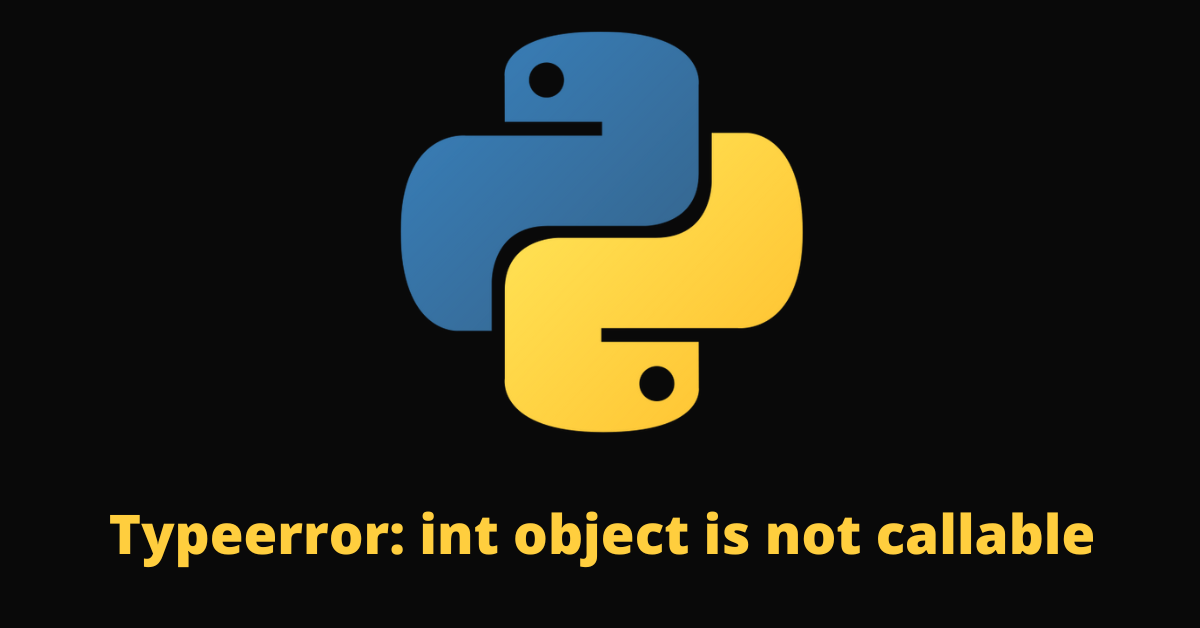

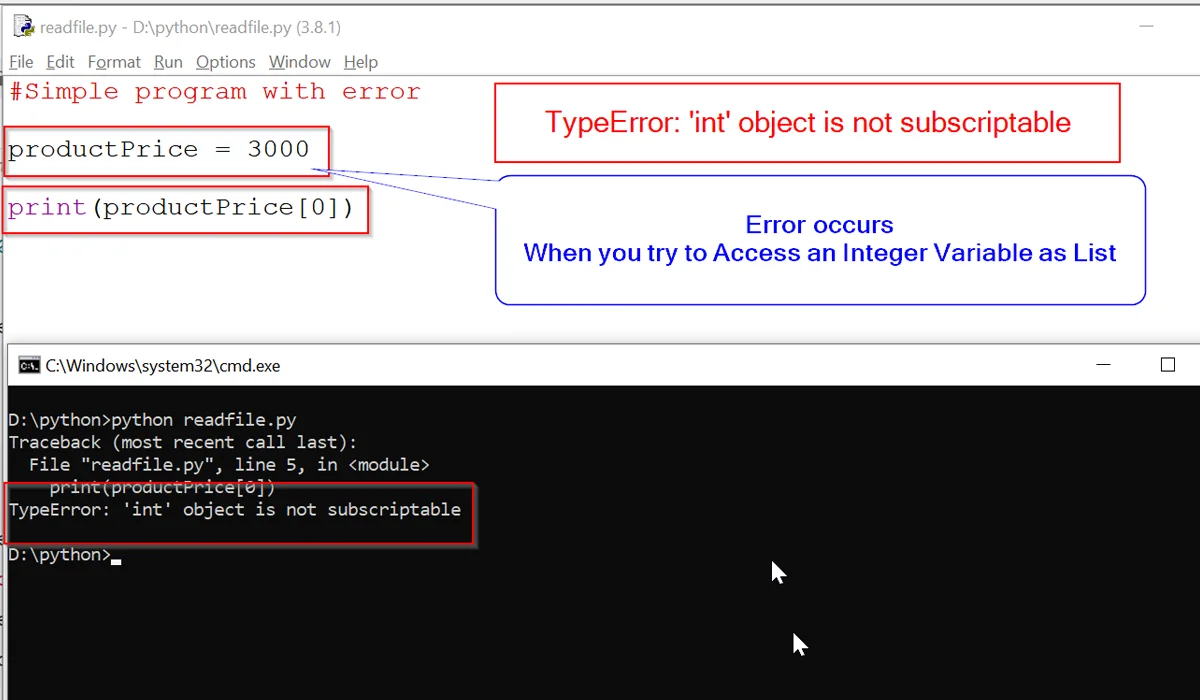
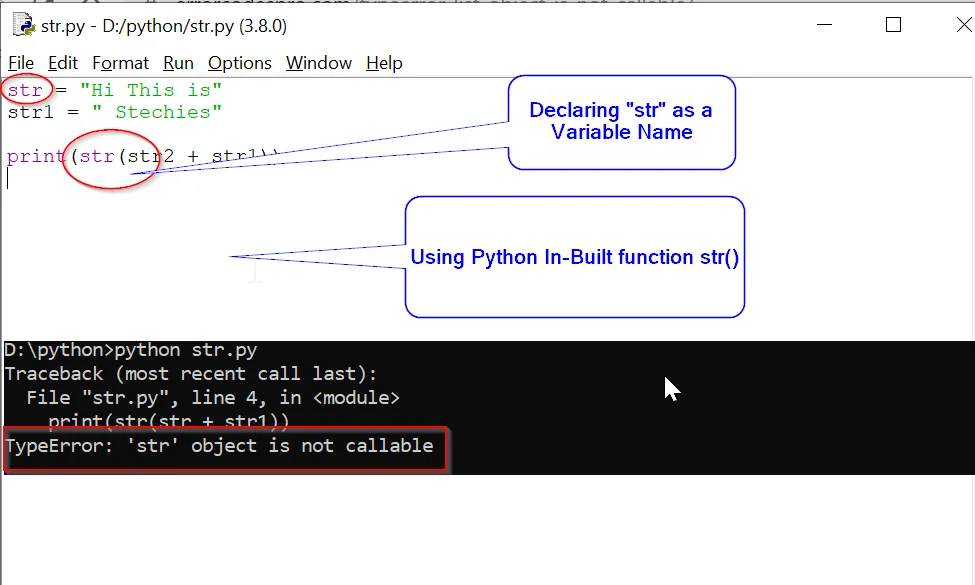


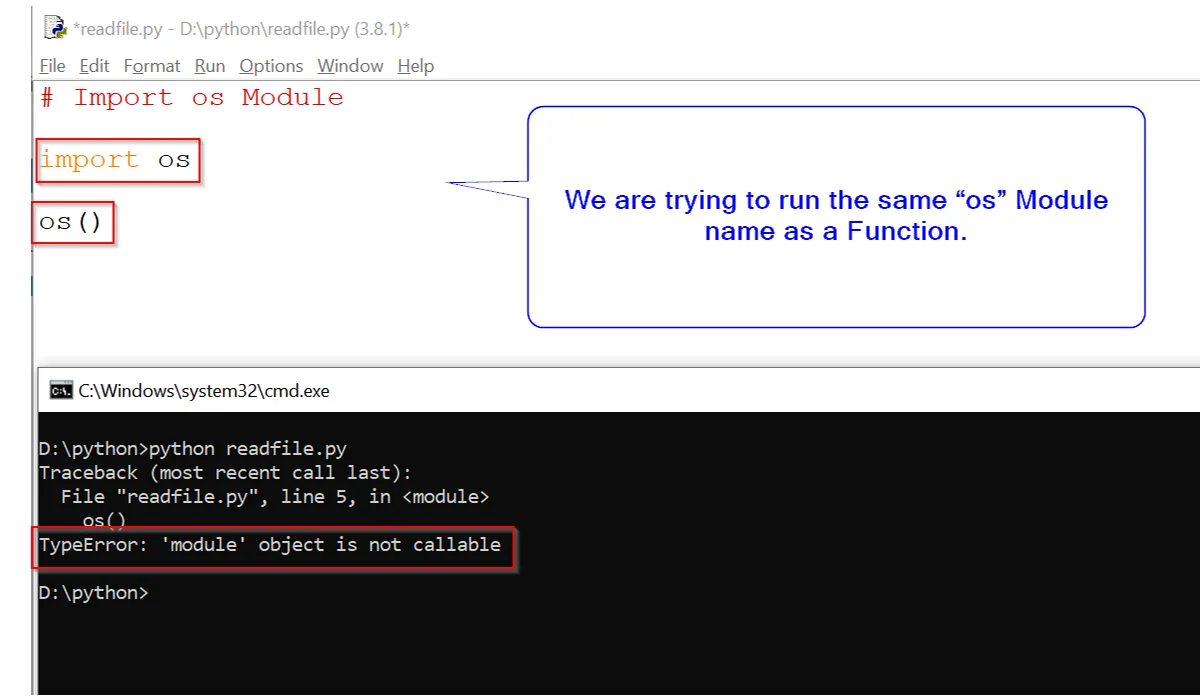

![SOLVED] typeerror: 'int' object is not iterable Solved] Typeerror: 'Int' Object Is Not Iterable](https://itsourcecode.com/wp-content/uploads/2023/04/typeerror-int-object-is-not-callable-1.png)






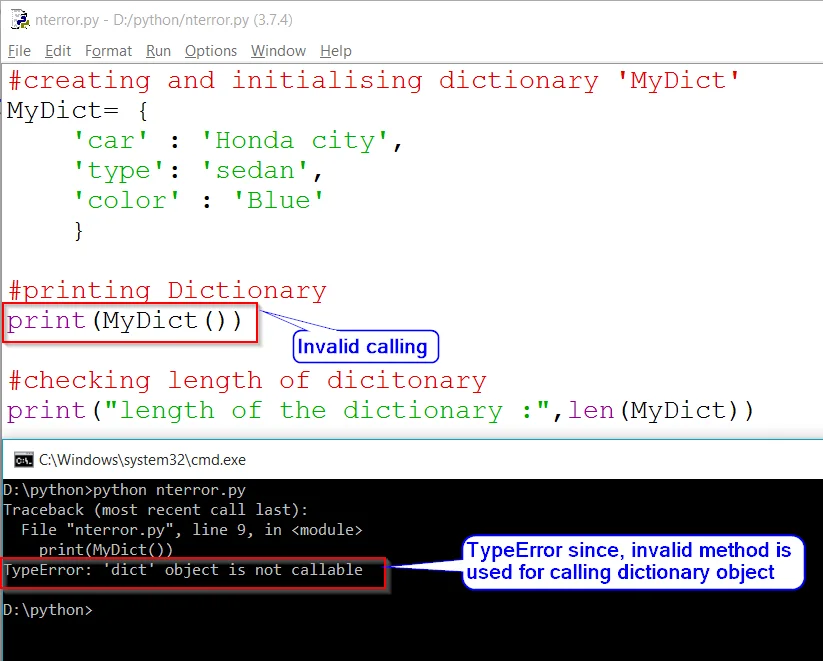




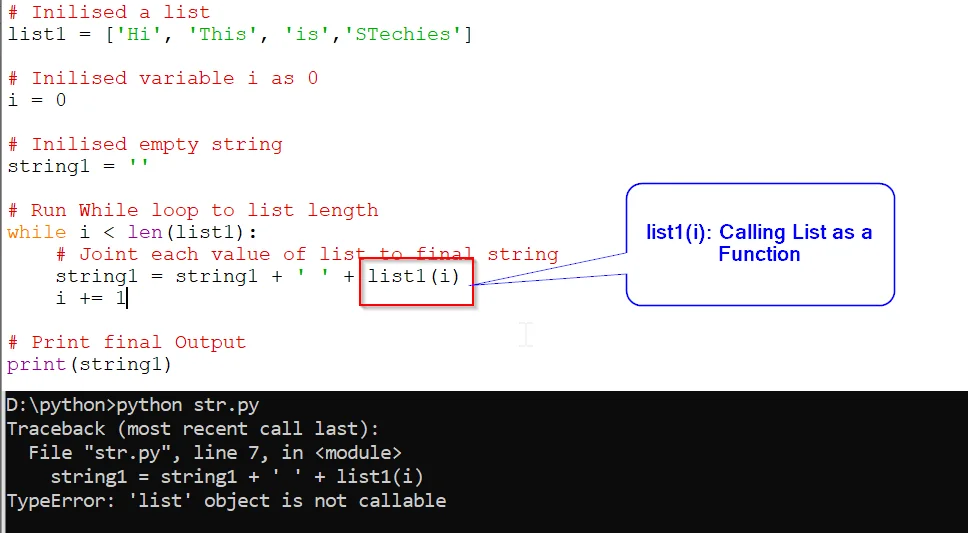

![오류] TypeError: 'int' object is not callable 오류] Typeerror: 'Int' Object Is Not Callable](https://img1.daumcdn.net/thumb/R800x0/?scode=mtistory2&fname=https%3A%2F%2Fblog.kakaocdn.net%2Fdn%2FbH9lO3%2Fbtr1fO53T0B%2F1uvuCr16WuSVweMwNAvlAK%2Fimg.png)


![Typeerror: int object does not support item assignment [SOLVED] Typeerror: Int Object Does Not Support Item Assignment [Solved]](https://itsourcecode.com/wp-content/uploads/2023/04/typeerror-int-object-does-not-support-item-assignment.png)












![Solved] TypeError: 'int' Object is Not Iterable - Python Pool Solved] Typeerror: 'Int' Object Is Not Iterable - Python Pool](https://www.pythonpool.com/wp-content/uploads/2022/03/TypeError-%E2%80%98int-object-is-not-iterable.webp)




Article link: typeerror ‘int’ object is not callable.
Learn more about the topic typeerror ‘int’ object is not callable.
- Typeerror: int object is not callable – How to Fix in Python
- TypeError: ‘int’ object is not callable – python – Stack Overflow
- TypeError: ‘int’ object is not callable in Python [Solved]
- Error TypeError: ‘int’ object is not callable – Python – STechies
- TypeError: module object is not callable [Python Error Solved]
- Python TypeError | How to Avoid TypeError with Examples – eduCBA
- Python Object is Not Callable Error – Linux Hint
- Noncallable Definition & Meaning – Merriam-Webster
- Python TypeError: ‘int’ object is not callable Solution
- [SOLVED] TypeError: “int” Object Is Not Callable – Python Pool
- TypeError: ‘int’ object is not callable in Python (Fixed)
- Typeerror: ‘Int’ Object Is Not Callable: A Set of Solutions
- typeerror: ‘int’ object is not callable [SOLVED] – Itsourcecode.com
- Typeerror: ‘int’ object is not callable: How to fix it in Python
See more: nhanvietluanvan.com/luat-hoc